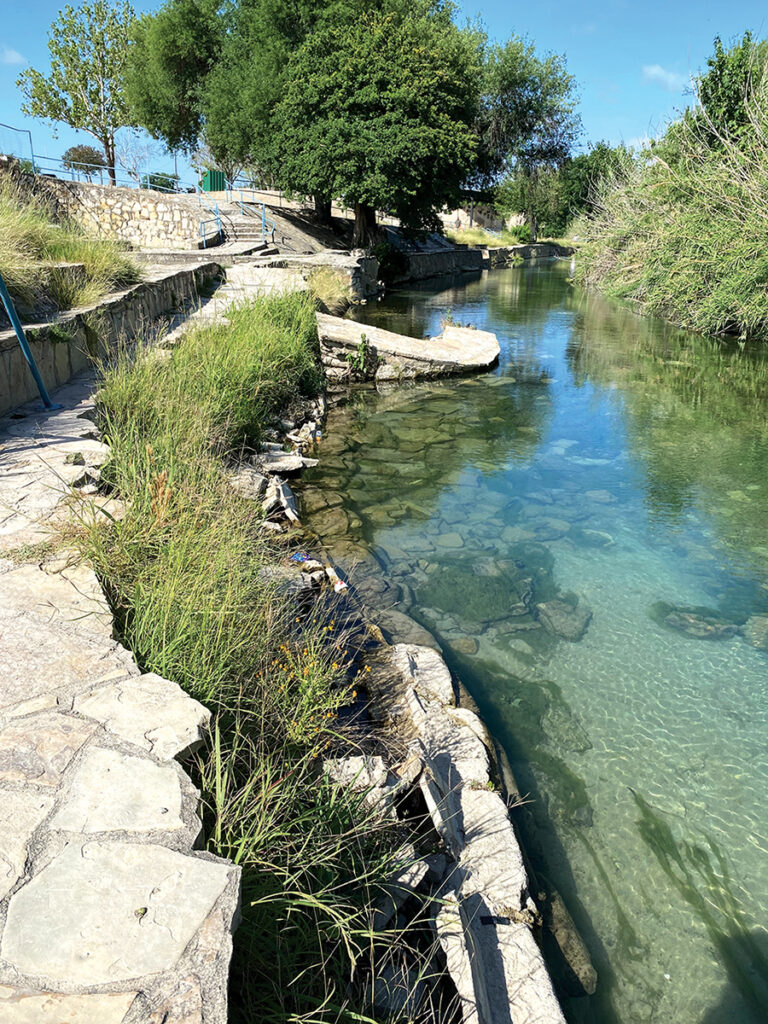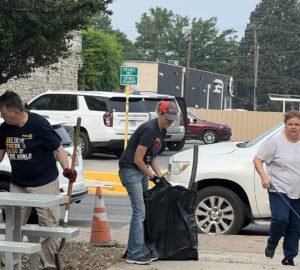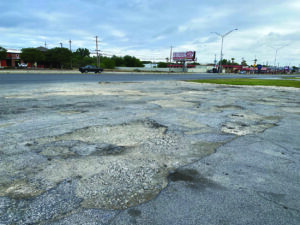By Karen Gleason
The 830 Times
An ongoing south Texas drought is having detrimental effects on the San Felipe Springs, the city’s sole source of drinking water, a city administrator told city council members Tuesday.
Assistant Public Works Director Greg Velazquez made his remarks during a presentation to the council during a special workshop meeting at City Hall.
Velazquez began his presentation to the council with a quote from American statesman Benjamin Franklin: “When the well runs dry, then we will know the worth of water.”
Velazquez first spoke to the council about the current drought conditions of the San Felipe Springs. Later in the presentation, he discussed the city’s ongoing efforts to obtain one or more alternate water sources for the city. (See separate story.)
“The San Felipe Springs East Springs and West Springs, as we all know, are the main raw water sources for the city of Del Rio. While the water flows up from underground and after continuous testing, the water is actually groundwater under the influence of surface water indicators (GUI),” Velazquez told the council.
He said water from the East Springs and West Springs is treated at the city’s water treatment plant, adding the city has had issues in the past with E. coliform bacteria in the raw water.
“With the current ongoing drought, a steady decline in the flow rate (of the springs) has been observed at the springs,” Velazquez said.

He said the city’s current drought contingency plan (DCP) is based off measurements from an International Boundary and Water Commission (IBWC) flow gauge along the San Felipe Creek downstream of the springs. He said the gauge measures flow rates of the San Felipe Creek.
“These creek flow rates are used to trigger the various drought emergency states,” he added. City staff said the city’s current drought contingency plan was initiated on Aug. 1, 2023.
“The city is currently working on updating our drought contingency plan. In order to improve the accuracy of determining the San Felipe Springs flows, the city is moving forward with purchasing flow meters to measure the spring flows as opposed to measuring the creek flows downstream. This improved flow measurement would provide more accurate information for use in triggering the various drought contingency stages,” Velazquez said.
“So there’s some gauging systems that measure the combined spring flow of the springs and the San Felipe Creek. The city of Del Rio is working on improving that by installing some flow meters at the actual springs to get the current measurement of our flow.
“The city is also looking at alternate water sources to supplement the San Felipe Springs flows while hopefully not being as susceptible to drought impacts. So far we have identified two possible plans, which are subject to further testing to determine the infrastructure requirements to bring these sources online into our water distribution system,” he said.
Velazquez walked the city council through an in-depth review of the current conditions at the East Springs and the West Springs.
Velazquez next reviewed the combined spring flows recorded by the city in March and April of this year.
“On the first of March, you’ll see the CMS (cubic meters per second of water flow) of 1.22, with the flow in millions of gallon per day (MGD) of 27.85. If we continue on, you can see a decrease through April 7, (when the city measured CMS flow) of 0.76 and 17 million gallons. So that’s a pretty significant decrease,” he said.
“Currently, the raw water that we’re taking in, 6.03 millions gallons a day of raw water, untreated, and treated was 5.86 million gallons a day. If we look at April 11, your raw water was 6.88 million gallons and 6.67 million gallons of treated water,” Velazquez said.
“So this is telling us the decrease in flow is not the demand of your constituents, it’s due to the drought and the decrease of the (water) supply into the recharge zone,” he added.
Velazquez then moved to the second portion of his presentation.
Perspective from Jerry Simpton, a local water expert is shared here.
(Parts 2 will be published Thursday evening and Part 3 Friday.)
The writer can be reached at delriomagnoliafan@gmail.com .





